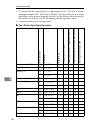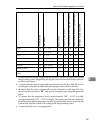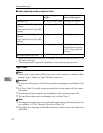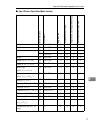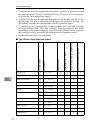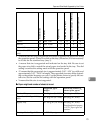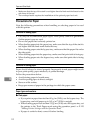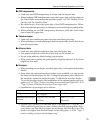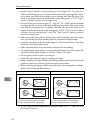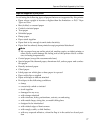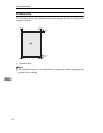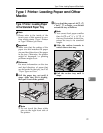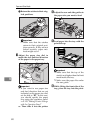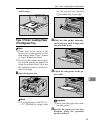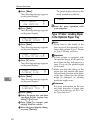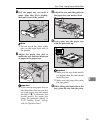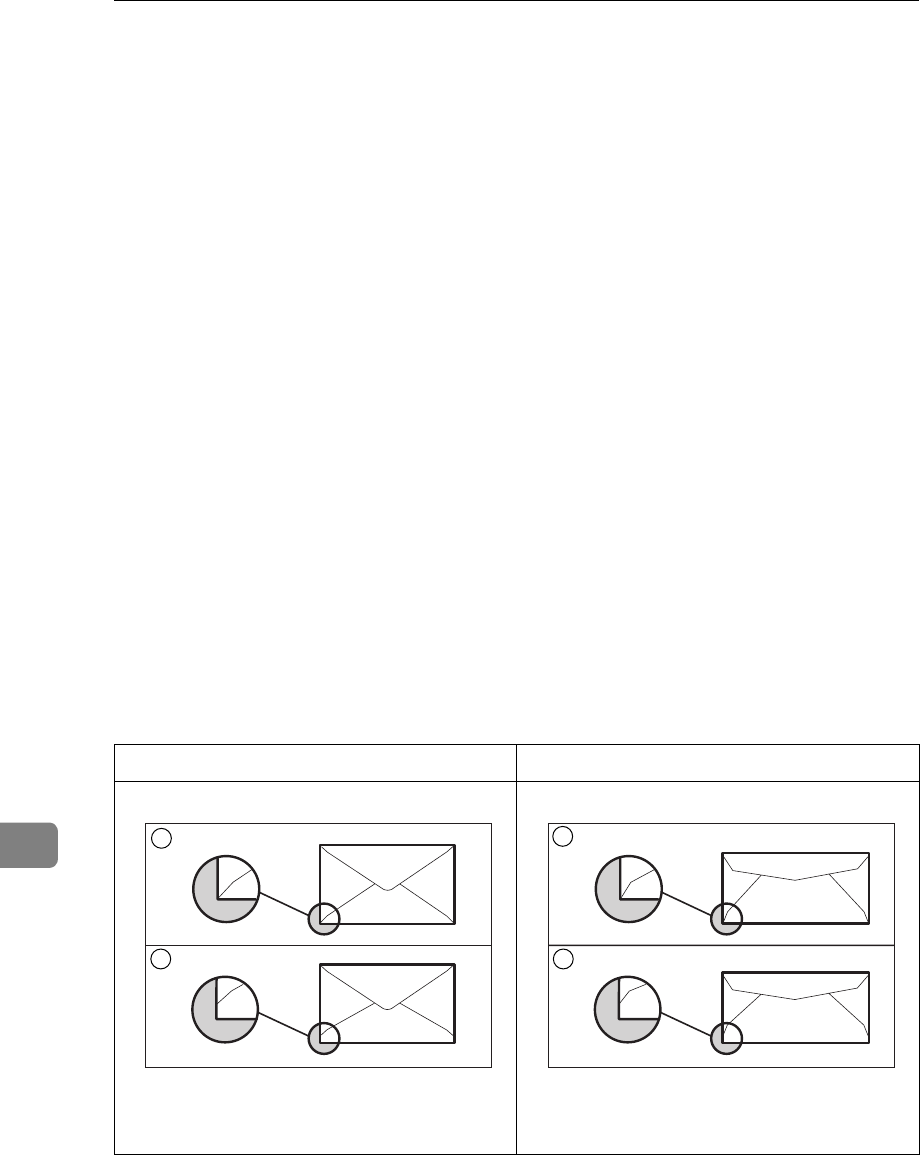
Paper and Other Media
76
9
• For the Type 2 printer, you can load up to 5 envelopes (72 – 90 g/m
2
, 19 –
24 lb) onto the bypass tray at a time, without forcibly pressing them. How-
ever, make sure that the envelopes are not damp, and that the top of the
stack is not higher than the limit mark on the side guide.
⇒
P.92
“Type 2
printer: loading envelopes onto the bypass tray”
• You can load up to 60 envelopes (72 – 90 g/m
2
, 19 – 24 lb) into the optional
envelope feeder at a time, without forcibly pressing them. However, make
sure that the envelopes are not damp, and that the top of the stack is not
higher than the limit mark on the side guide.
⇒
P.85
“Type 1 printer: loading
envelopes into the envelope feeder”
and P.94
“Type 2 printer: loading envelopes
into the envelope feeder”
• Make sure that print side is facing down when loading onto the bypass
tray, and facing up when loading into the optional envelope feeder.
• Load the envelopes with the flaps aligned to the left side fence. The flaps
should be securely folded down.
• Make sure that there is no air in the envelopes before loading.
• To get the better print quality, it is recommended that you set the right, left,
top, and bottom print margin, to at least 15 mm (0.6") each.
• Do not print on both sides of envelopes.
• Load only one size and type of envelope at a time.
• Before loading envelopes, flatten the leading edges (side being fed into the
printer) of them by running a pencil or ruler across them.
• Before loading envelopes, make sure that they are rectangular in shape.
Refer to the following illustrations.
• Avoid using the non-supported envelopes listed on P.77
“Paper not sup-
ported by this printer”
.
Metric version Inch version
A
Good construction for envelopes
B
Poor construction for envelopes
A
Good construction for envelopes
B
Poor construction for envelopes
TS3X020E
2
1
TS3X010E
2
1



